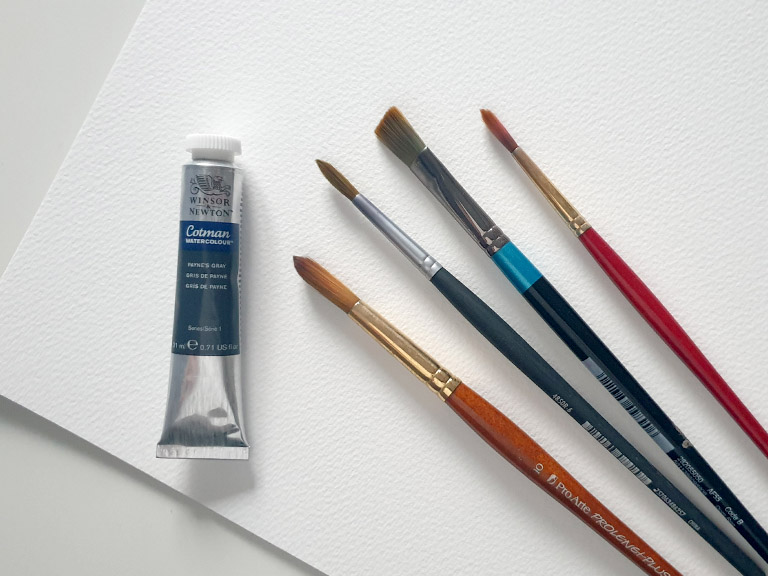If you’re just getting started with watercolour, choosing the right painting supplies can be daunting and overwhelming. There are hundreds of options and choosing the wrong ones can be expensive.
While art supplies are a very personal choice and you might hate the ones I love, I hope this guide to watercolour supplies for beginners will help you find the right options for you.
What are the best cheapest watercolour supplies?
Straight up, I’m going to tackle this question! Loads of beginners ask this, and I want to be honest with you. Cheap supplies are never good quality. If you see something on sale and if it seems too good to be true, it probably is.
The problem with cheap supplies is that they are never going to give you the results you’re hoping for. Your paintings won’t look the way you want them to, and you’ll be left feeling frustrated.
However, that doesn’t mean you need to spend a ton of money for good supplies, you just have to know what you’re looking for.
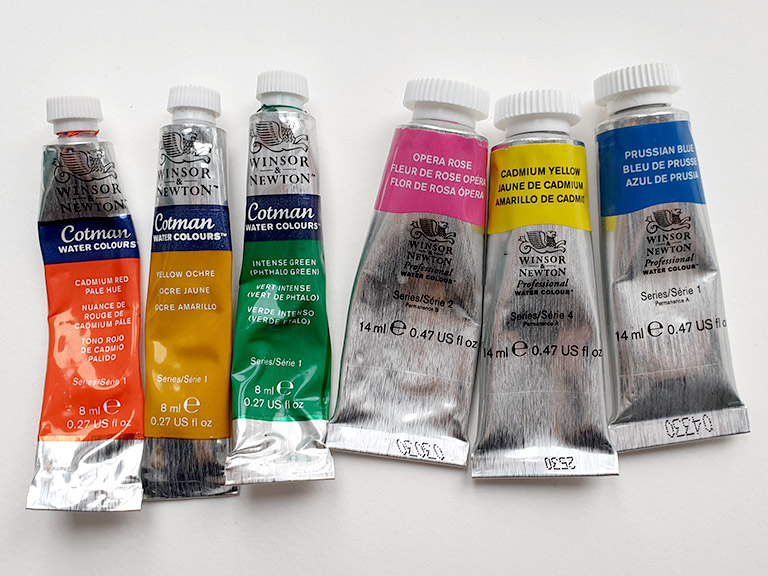
Student-grade watercolour supplies
Art materials come in three types: general mass market, student-grade and professional quality. I really recommend choosing student grade as a minimum if you can afford to. Student-grade watercolour supplies are specifically designed for beginners and artists on a budget.
While they are slightly lower quality compared to professional-grade materials, they’re usually brilliant for learning and experimentation. Student-grade supplies can still give rich results and good colours, and you can easily upgrade to professional paints as you progress. (This is what I did!)
The cheapest watercolour supplies are generally poor quality and won’t create vibrant paintings. The colours will be chalky, the paper will dry in patches and become wrinkled. So many beginners think that they aren’t any good at painting, when in fact they just have bad supplies.
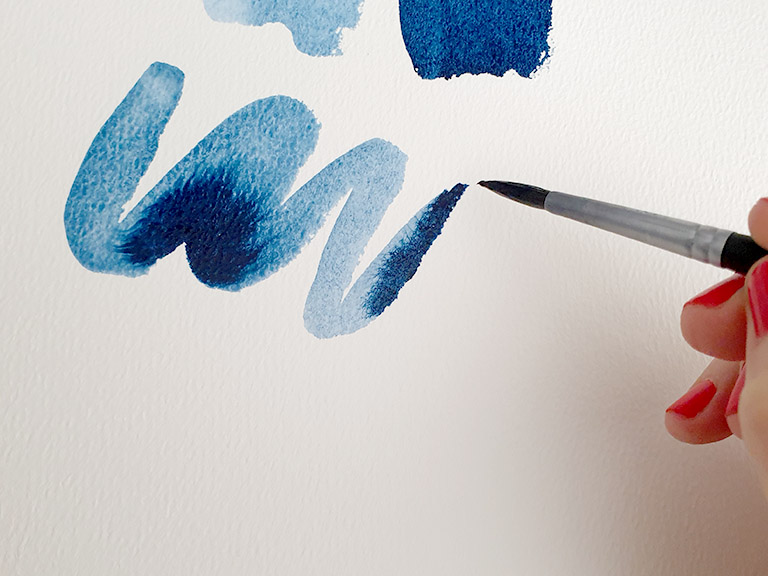
Watercolour paper for beginners
Watercolour paper is the most important supply to get right, because great quality paints will look faded on cheap paper. To find the best watercolour paper for beginners, there are three important things to choose:
Weight: Look for paper with a weight of at least 140 lb (300 gsm) as it can handle wet washes and prevent buckling. Thinner paper will wrinkle and create patches in the paintings.
Texture: Hot press is smooth and tricker for beginners, and rough finish can be too textured. I really recommend beginners choose cold-pressed or medium-textured paper.
Format: Most beginners prefer to start painting watercolours with sketchbooks or pads. It comes in a range of sizes, and the paper can be cut down to make smaller pieces.
Read my ultimate guide to watercolour paper for more.
The best watercolour paper brands for beginners
Choose the brands that are cheapest and easiest to buy where you live. I love and used these brands as a beginner:
- Canson XL Watercolour Paper
- Strathmore 400 Series Watercolour Paper
- Cass Art Watercolour Paper
- Daler Rowney Aquafine Watercolour Paper
- Moleskine Art Watercolour Sketchbooks
- St Cuthberts Mill Bockingford Watercolour Paper
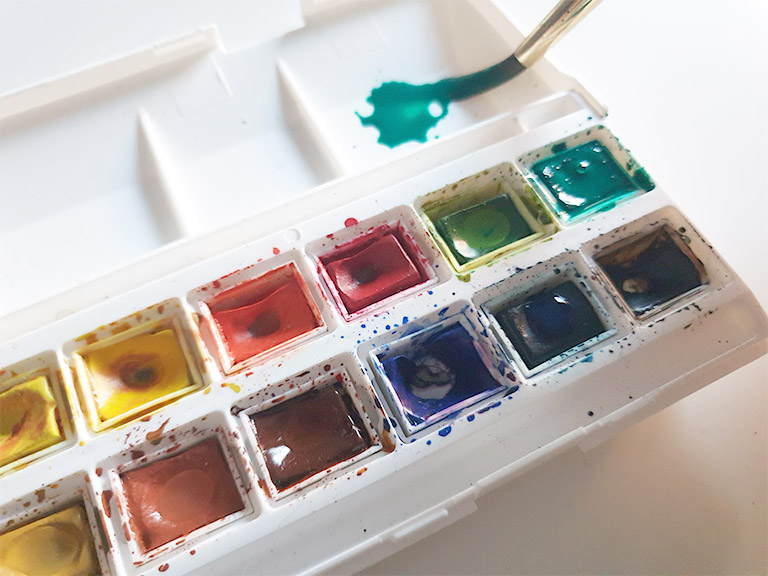
Watercolour paints for beginners
Watercolour paints come in various forms, including tubes, pans, and liquids. Pans are usually the most affordable option – they’re small blocks of dried paint that can be activated with a wet brush.
I’d recommend that beginners choose a small watercolour set to get started, ideally in student grade. These often come in small plastic or metal tins with the lid doubling as a mixing palette.
Choose a watercolour set that includes primary colours (red, yellow, blue) and a few additional colours for mixing.
Read my ultimate guide to watercolour paints for more.
The best watercolour paint brands for beginners
These are some of the best student-grade watercolours that I used when I was starting out:
- Winsor & Newton Cotman Watercolours
- Van Gogh Watercolour Paints
- Daler Rowney Aquafine Watercolour Paints
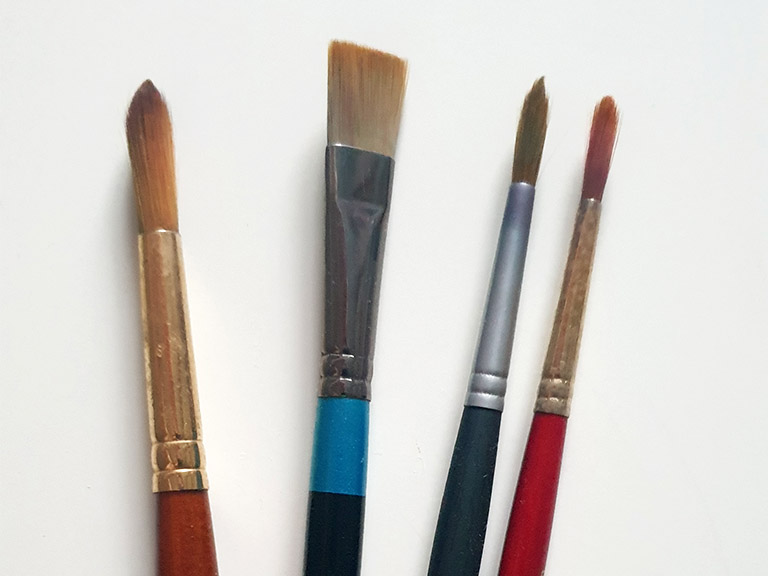
Watercolour brushes for beginners
Watercolour brushes need to be gentle and soft because the pigments are delicate, so you need brushes designed for watercolour rather than oils and acrylics. I always recommend that beginners choose synthetic hair (sometimes called Taklon) rather than real animal hair, which is more expensive.
Don’t buy a huge set of brushes, you’ll almost certainly never use them. Here’s what I recommend for beginners:
- A mid size round brush e.g. a size 6
- A small brush for details (e.g. size 2 round)
- A flat brush with a square edge for broad strokes
A mop brush is a good alternative to a round brush – it holds a lot of water and can be really flexible for new artists.
Read my guide to watercolour brushes, plus a breakdown of the brush types for watercolour.
The best watercolour brush brands for beginners
- Daler Rowney Aquafine Watercolour Brushes
- Pro Arte Prolene Brushes
- Princeton Aqua Elite Brushes
Make sure to use your supplies!
There’s no point buying expensive supplies as a watercolour beginner if you’re going to hesitate to paint with them. If you’re hoarding supplies, too scared to waste them, then they’re too expensive.
Even if you absolutely hate what you paint, it’s still time spent being creative and practising. That’s never a waste. Make the most of your new watercolour supplies by using them to make lots of lovely paintings.
Download my full supply list to see what supplies I use.
Download my free watercolour supply guide
Feeling overwhelmed and confused by watercolour paints, papers and brushes? Download my free guide filled with insider info, including a list of good supplies for every budget, and my complete supply list!
